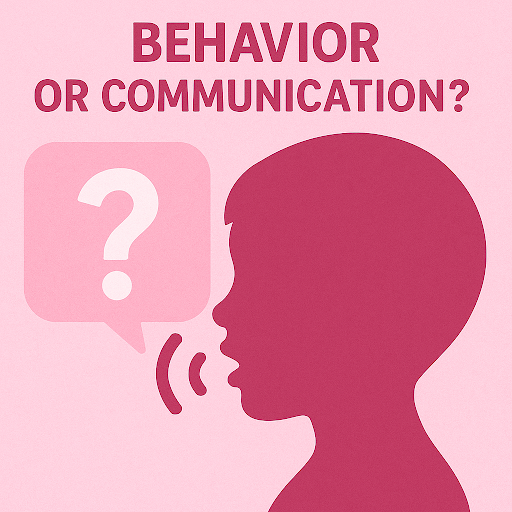Is This Behavior a Speech-Language Issue or Something Else?
Learn to differentiate between behavioral issues and underlying speech-language difficulties

"He never follows directions."
"She keeps interrupting other kids."
"They always say 'I don't know.'"
As an SLP, these kinds of behavioral observations are often the first clues that bring a child to your radar. But behavior is rarely just behavior — it can be a window into communication struggles, emotional regulation challenges, or something else entirely.
So how do you tell when a behavior points to a speech-language issue… and when it doesn't?
Let's walk through how to break it down — clinically, compassionately, and clearly.
Why Behavior Is Often the First Red Flag
Before a child gets referred for an evaluation, adults around them usually notice:
- Difficulty following rules or routines
- Avoidance of verbal tasks
- Disruptions during group work or learning
- Social struggles or emotional outbursts
But here's the tricky part: These behaviors might stem from:
- A receptive or expressive language disorder
- ADHD, anxiety, or executive functioning difficulties
- Autism or pragmatic language delays
- Environmental factors or trauma
And sometimes? It's a mix of all of the above.
Step 1: Look for Communication Load
Ask yourself: "What's the communication demand in the situation where the behavior happens?"
Examples:
- During multi-step directions = possible receptive language issue
- During open-ended verbal tasks = possible expressive language weakness
- During peer interaction = possible pragmatic breakdown
- During fast-paced group instruction = possible auditory processing or working memory concern
High communication load = higher chance the behavior is language-linked.
Step 2: Consider the Function of the Behavior
Use the "why" lens:
- Is the child trying to avoid embarrassment or task failure?
- Are they using disruptive behavior to distract from a language gap?
- Do they shut down when asked to explain or describe?
Avoidance, withdrawal, deflection, or overcompensating are often language protection strategies in disguise.
Step 3: Check for Communication Red Flags
Even if speech is clear and vocabulary seems age-appropriate, listen for:
- Vague or off-topic responses
- Frequent "I don't know" or "what?" replies
- Repeating the question before answering
- Trouble retelling events or stories
- Unusual pacing or intonation
These are subtle signs of deeper processing or formulation issues.
Step 4: Rule Out (or In) Other Factors
Behavior can also stem from:
- ADHD: impulsivity, inattention
- Anxiety: task avoidance, selective mutism
- Trauma: hypervigilance, emotional dysregulation
- Learning disabilities: frustration tied to academic failure
That's why a multi-disciplinary approach is key. SLPs don't diagnose ADHD or trauma — but we can rule in or out language barriers contributing to the behavior.
Step 5: Collaborate with the Team
Don't go it alone. Talk to:
- Teachers: What patterns are they seeing? When does the behavior happen most?
- Parents: What's different at home vs. school?
- Counselors or psychologists: Are there emotional or sensory concerns?
A 360° view often reveals whether communication breakdowns are driving the behavior — or if it's something broader.
Step 6: Document Clearly
If you suspect a language-based behavior issue:
"Behaviors such as task avoidance and frequent 'I don't know' responses may be associated with expressive language formulation difficulties."
If you suspect otherwise:
"Behavioral concerns appear unrelated to speech-language skills at this time, based on observation and standardized assessment."
Use clear, clinical phrasing — not guesswork.
SLP Score Helps You Make the Call (and Back It Up)
With SLP Score, you can:
- Integrate behavioral observations right into your evaluation
- Auto-generate clear interpretations of how language impacts classroom behavior
- Build reports that connect test scores to real-world outcomes
- Export clean, parent- and teacher-friendly reports — without overexplaining
No more staring at your notes wondering how to phrase what you're seeing.
Behavior Is Communication
And sometimes, it's crying out for a speech-language evaluation. Start your next one with SLP Score.
Start Here →